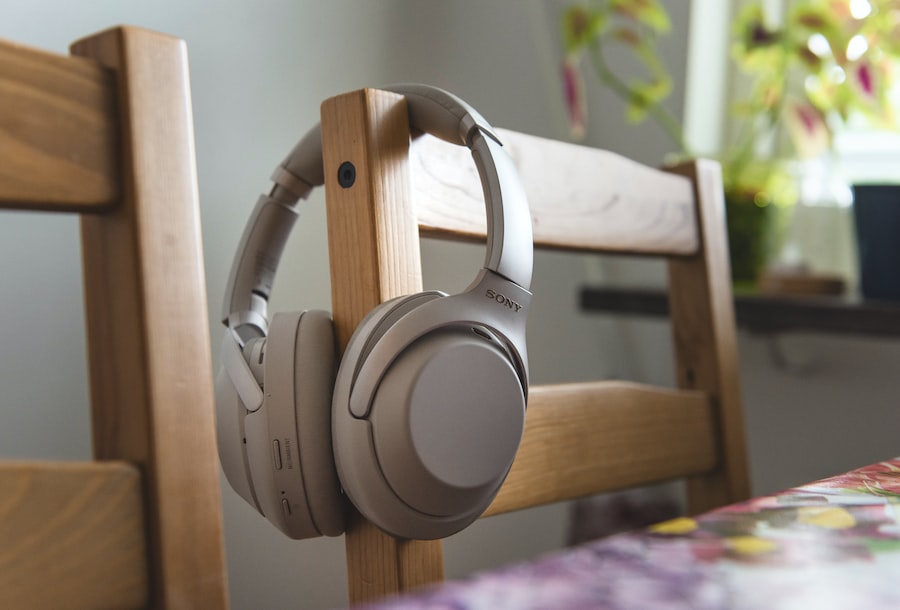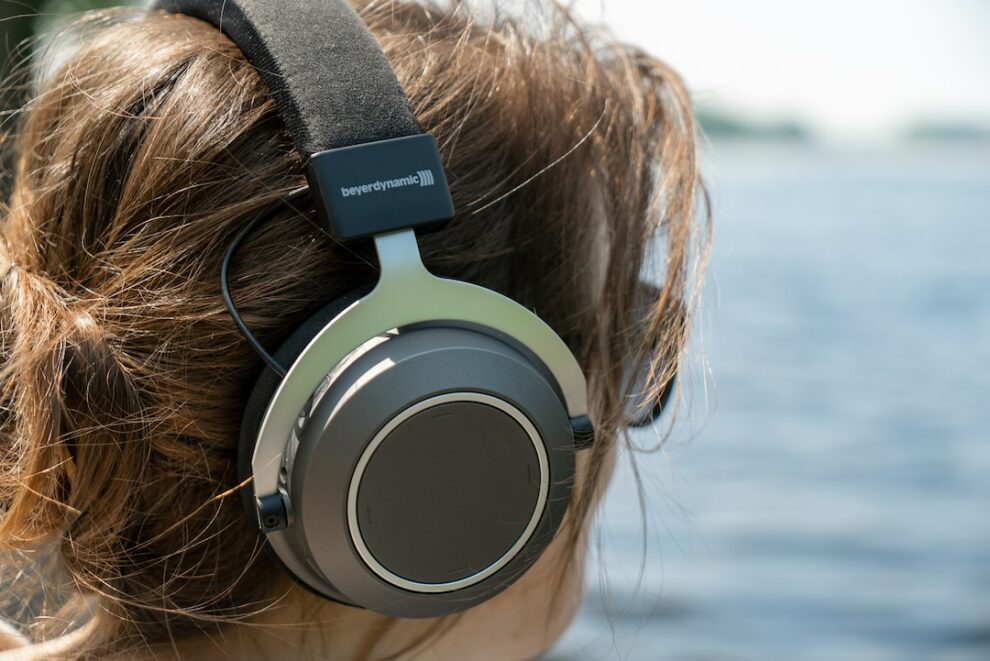Over-ear headphones have become increasingly popular in recent years, thanks to their superior sound quality and comfortable design. These headphones are designed to fully cover the ears, providing a more immersive audio experience. However, like any electronic device, over-ear headphones can sometimes encounter sound issues that can affect the overall listening experience.
Common Sound Issues with Over-Ear Headphones
1. Distorted sound: One of the most common sound issues with over-ear headphones is distorted sound. This can manifest as crackling, popping, or fuzzy audio. Distorted sound can be caused by a variety of factors, including damaged cables, loose connections, or issues with the audio source.
2. Low volume: Another common issue is low volume. If you find that your over-ear headphones are not producing enough sound, it could be due to a problem with the audio source, headphone settings, or even a faulty driver.
3. Uneven sound balance: Uneven sound balance occurs when the audio is louder in one ear than the other. This can be frustrating and can make it difficult to fully enjoy your music or movies.
4. Background noise: Over-ear headphones are designed to block out external noise and provide a more immersive listening experience. However, if you are hearing background noise or static while using your headphones, it can greatly diminish the overall sound quality.
Checking the Audio Source for Sound Issues
Before troubleshooting your over-ear headphones, it’s important to first check the audio source for any potential issues. Ensure that the volume is turned up and that there are no software or hardware problems with the device you are using to play audio.
Additionally, compatibility issues can sometimes arise when using over-ear headphones with certain devices. Make sure that your headphones are compatible with the audio source you are using and that all necessary drivers or software are installed.
Verifying Headphone Connections and Cables
Loose connections or damaged cables can often be the cause of sound issues with over-ear headphones. Start by checking that the headphone jack is securely plugged into the audio source. If it is loose, try unplugging and re-plugging it to ensure a proper connection.
Inspect the cables for any signs of damage, such as fraying or exposed wires. If you notice any damage, it may be necessary to replace the cables to restore optimal sound performance.
Adjusting Headphone Settings for Better Sound Quality
Sometimes, sound issues with over-ear headphones can be resolved by adjusting the headphone settings. Most over-ear headphones come with built-in equalizer settings that allow you to customize the sound to your preferences. Experiment with different equalizer presets to see if it improves the sound quality.
Additionally, make sure that the volume settings on both your audio source and headphones are properly adjusted. If the volume is too low on either device, it can result in a diminished listening experience.
Some over-ear headphones also have different sound modes, such as bass boost or surround sound. Try experimenting with these settings to see if it improves the overall sound quality.
Updating Headphone Firmware and Drivers

Keeping your over-ear headphones’ firmware and drivers up to date is crucial for optimal sound performance. Manufacturers often release firmware updates that address any known issues or improve overall functionality.
To update your headphone’s firmware, check the manufacturer’s website for any available updates. Follow the instructions provided to download and install the latest firmware onto your headphones.
Similarly, updating the drivers on your computer or audio source can also help resolve sound issues. Visit the manufacturer’s website for your device and download any available driver updates.
Cleaning Over-Ear Headphones for Optimal Sound Performance
Regularly cleaning your over-ear headphones is essential for maintaining optimal sound performance. Over time, dirt, sweat, and earwax can accumulate on the ear cups and affect the sound quality.
To clean your over-ear headphones, start by removing any detachable parts, such as ear pads or cables. Use a soft cloth or cotton swab dampened with a mild cleaning solution to gently wipe down the ear cups and other surfaces. Avoid using harsh chemicals or abrasive materials that could damage the headphones.
Allow the headphones to fully dry before reattaching any parts and using them again. Regular cleaning will not only improve sound quality but also extend the lifespan of your over-ear headphones.
Resetting Over-Ear Headphones to Default Settings
If you have tried all the previous troubleshooting steps and are still experiencing sound issues with your over-ear headphones, it may be necessary to reset them to their default settings. This can help resolve any software or firmware glitches that may be causing the problem.
To reset your over-ear headphones, consult the manufacturer’s instructions for your specific model. Typically, this involves holding down a combination of buttons or switches for a certain period of time. Keep in mind that resetting your headphones will erase any customized settings, so be sure to take note of any preferred settings before proceeding.
Troubleshooting Sound Issues with Wireless Over-Ear Headphones
Wireless over-ear headphones come with their own set of potential sound issues. Some common problems include connectivity issues, audio lag, or interference from other devices.
If you are experiencing connectivity issues, try turning off both your headphones and audio source, then turn them back on and attempt to reconnect. Make sure that your headphones are within range of the audio source and that there are no obstructions blocking the signal.
Audio lag can be particularly frustrating when watching videos or playing games. In this case, try adjusting the audio delay settings on your audio source or using a different wireless connection method, such as Bluetooth instead of Wi-Fi.
If you are experiencing interference from other devices, try moving away from any potential sources of interference, such as other wireless devices or electronic equipment. Additionally, make sure that your headphones are fully charged, as low battery levels can sometimes affect the sound quality.
Seeking Professional Help for Persistent Sound Issues with Over-Ear Headphones
If you have tried all the troubleshooting steps and are still experiencing persistent sound issues with your over-ear headphones, it may be time to seek professional help. This is especially true if your headphones are still under warranty.
Contact the manufacturer or authorized service center for assistance. They will be able to diagnose and repair any hardware or software issues that may be causing the sound problems.
In conclusion, over-ear headphones are a popular choice for those seeking high-quality sound and comfort. However, they can sometimes encounter sound issues that can affect the overall listening experience. By following the troubleshooting steps outlined in this article, you can resolve common sound issues and maintain optimal sound performance with your over-ear headphones. Remember to regularly clean and update your headphones to ensure they continue to provide the best audio experience possible.
If you’re having trouble with sound issues on your over-ear headphones, you might find this article on “The Science of Self-Discipline” helpful. It explores the psychology behind developing self-discipline and offers practical tips for improving focus and productivity. Check it out here.
FAQs
What are over-ear headphones?
Over-ear headphones are a type of headphones that have ear cups that completely cover the ears. They are designed to provide better sound quality and noise isolation compared to other types of headphones.
What are some common sound issues with over-ear headphones?
Some common sound issues with over-ear headphones include low volume, distorted sound, no sound, and one-sided sound.
What can cause sound issues with over-ear headphones?
Sound issues with over-ear headphones can be caused by a variety of factors, including loose or damaged cables, faulty audio drivers, incorrect audio settings, and software issues.
How can I troubleshoot sound issues with my over-ear headphones?
To troubleshoot sound issues with over-ear headphones, you can try checking the cables for any damage or loose connections, adjusting the audio settings on your device, updating the audio drivers, and resetting the headphones.
What should I do if my over-ear headphones are still not working after troubleshooting?
If your over-ear headphones are still not working after troubleshooting, you may need to contact the manufacturer for further assistance or consider getting them repaired or replaced.









Add Comment